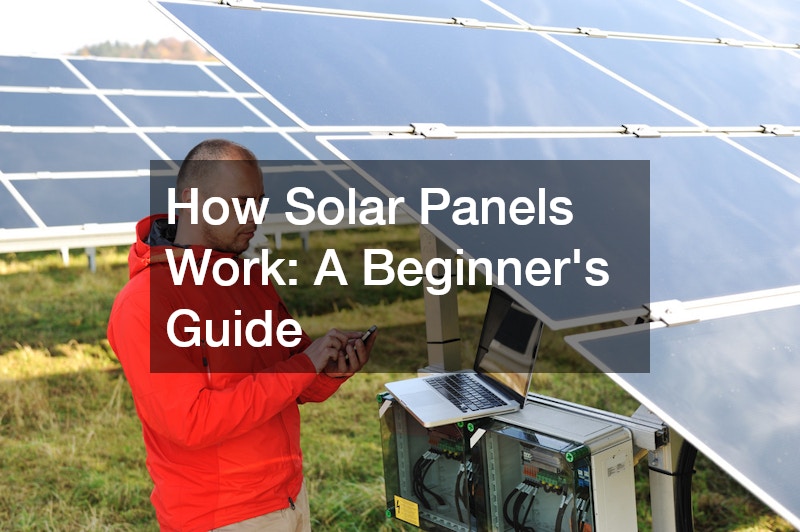As Australians search for more sustainable energy options, solar panels are quickly becoming a household essential. Whether you’re looking to lower power bills or reduce your carbon footprint, understanding the basics of how solar arrays work is the first step toward energy independence.
This guide breaks down the science, the system components and how it all comes together to power your home efficiently.
The Basics of Solar Energy
At the heart of every solar power system is the sun. Solar cells capture sunlight and convert it into electricity using a process called the photovoltaic effect. When sunlight hits the solar cells—typically made from silicon—it knocks electrons loose, generating an electric current. This electricity is known as direct current (DC) and must be converted into alternating current (AC) to power standard household appliances.
This entire process is clean and silent, relying solely on the natural light that Australia enjoys in abundance. With rising energy prices and increased climate awareness, homeowners are turning to solar arrays as a reliable source of renewable energy.
Key Components of a Solar System
Understanding how solar cells work means becoming familiar with the key components of a solar energy system. These include:
- Solar Cells: Mounted on rooftops or open land, these are the primary devices that capture sunlight. A panel is made up of many solar cells arranged in a grid pattern, each playing a role in generating electricity.
- Inverter: This crucial device converts the DC electricity generated by the panels into AC electricity used in your home. There are string inverters (connected to a series of panels) and microinverters (connected to each individual panel).
- Battery Storage (Optional): For those looking to maximise self-sufficiency, solar batteries store excess electricity produced during the day for use at night or on cloudy days.
- Meter and Monitoring Systems: These allow you to track your energy production and usage in real time, helping you identify savings and monitor performance.
The Step-by-Step Process
- Sunlight Hits the Panels: When the sun shines on your solar arrays, the photovoltaic cells absorb the sunlight.
- Electricity Generation: The absorbed sunlight generates an electric current (DC) as electrons move within the cells.
- Conversion to Usable Power: The inverter converts the DC electricity into AC, making it compatible with your household electrical system.
- Powering Your Home: The AC electricity flows through your switchboard and into your home, powering everything from lights to appliances.
- Excess Energy Handling: If your system produces more electricity than you need, the surplus is either sent back to the grid (earning you credits via feed-in tariffs) or stored in batteries for later use.
This seamless process allows homeowners to generate power without noise, fuel or harmful emissions.
Why Solar Arrays Make Sense in Australia
Australia’s climate is particularly suited to solar technology. With high levels of solar irradiation across most regions, even a modest installation can yield significant energy returns. Furthermore, many state and federal incentives are available to help offset the cost of purchasing and installing solar cells.
In addition to the financial savings, going solar contributes to broader environmental goals. Reducing dependence on coal and gas power plants helps cut greenhouse gas emissions and lowers the national carbon footprint.
Installation & Maintenance Considerations
When deciding to install solar panels, it’s essential to work with a Clean Energy Council-accredited installer. A professional will assess your property’s orientation, roof space and energy needs to design a system tailored for maximum efficiency.
Once installed, solar systems require minimal maintenance. Panels should be kept clean and unobstructed—particularly from dust, leaves or bird droppings—to maintain optimal performance. Most systems come with a 20- to 25-year warranty, providing long-term peace of mind.
Regular performance monitoring will alert you to any drop in output, which may indicate the need for servicing. However, in most cases, annual inspections are sufficient to ensure your system remains in top condition.
Common Myths About Solar Arrays

Despite growing popularity, several misconceptions about solar cells persist:
- “They don’t work on cloudy days.” While solar output is reduced during overcast weather, panels still generate electricity in indirect sunlight.
- “They’re too expensive.” Thanks to rebates, incentives and falling manufacturing costs, solar is more affordable than ever and can pay for itself within a few years.
- “They require too much maintenance.” In reality, they need less upkeep than many traditional household systems.
Understanding the facts can help you make an informed decision and maximise the benefits of going solar.
Solar panels are more than just an environmentally friendly trend—they’re a practical, cost-effective solution to modern energy challenges. By understanding how they work, what components make up a typical system and the benefits they provide, Australian homeowners can make smarter energy choices for a sustainable future.


